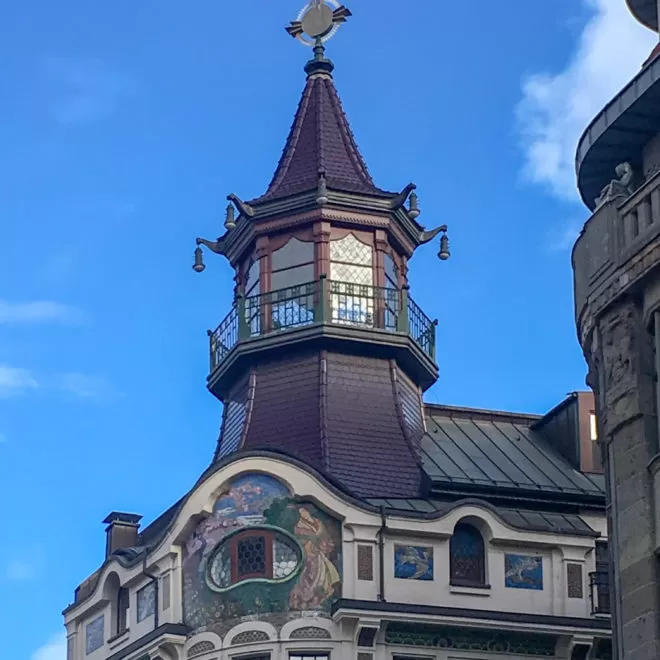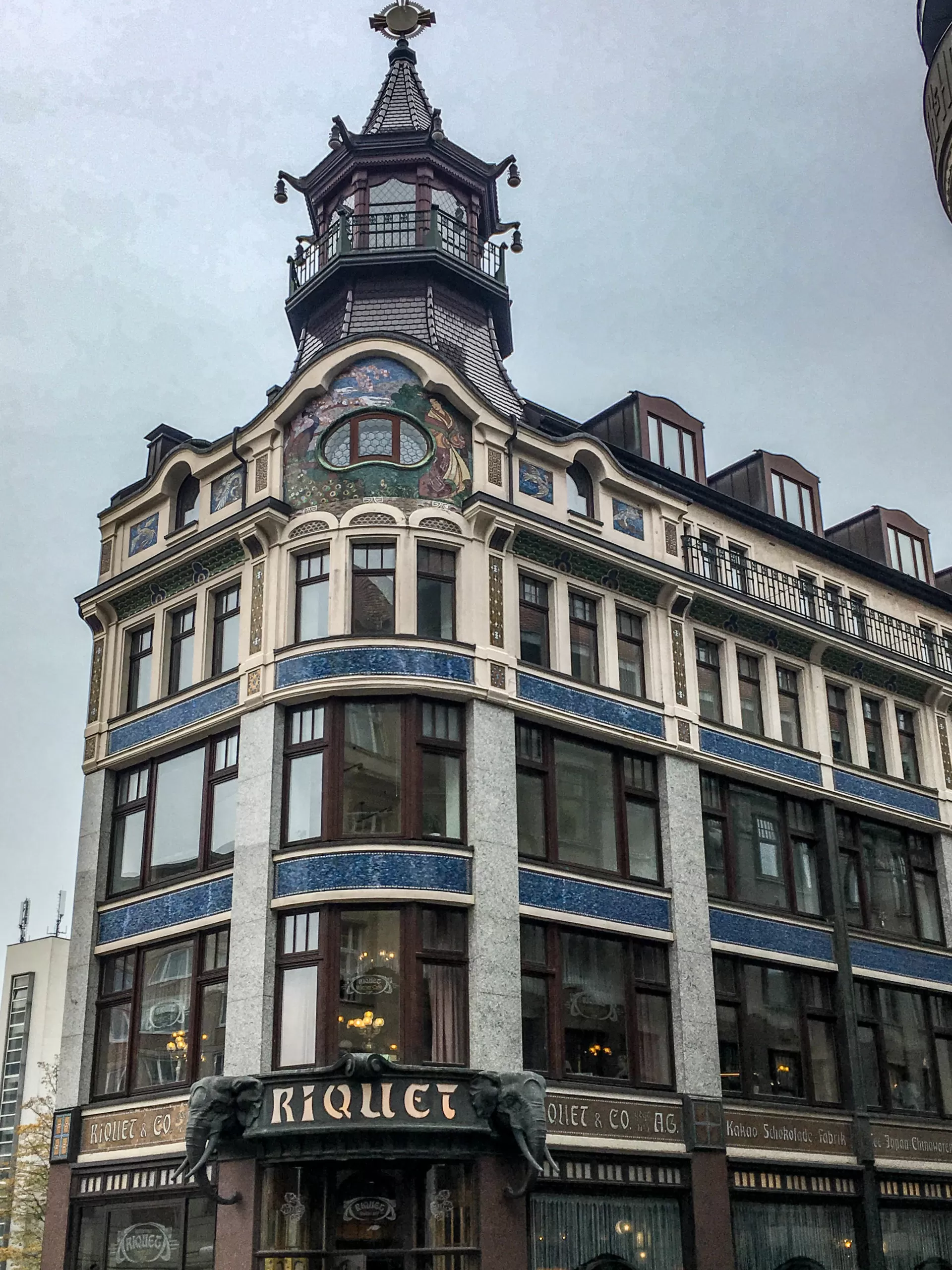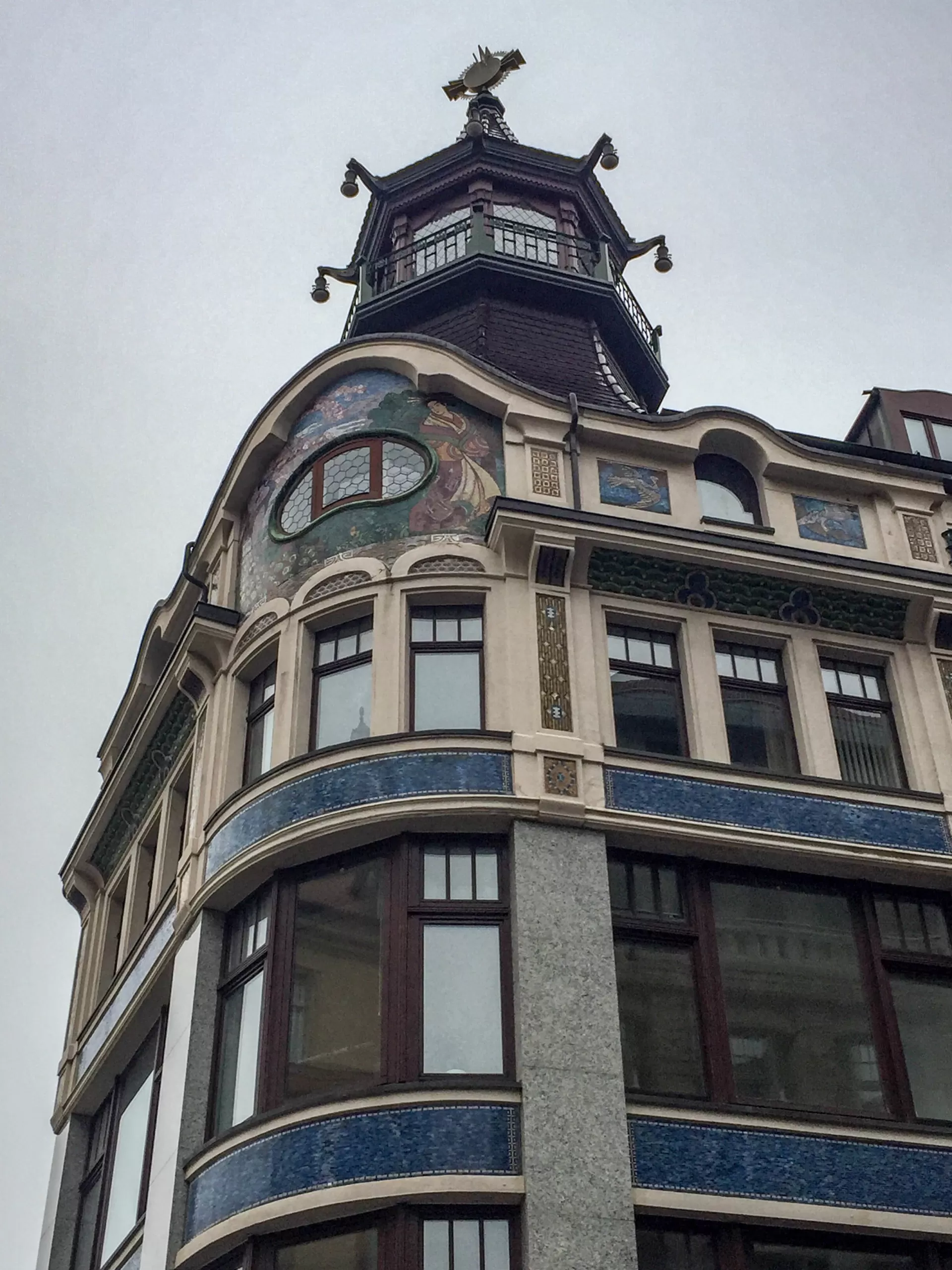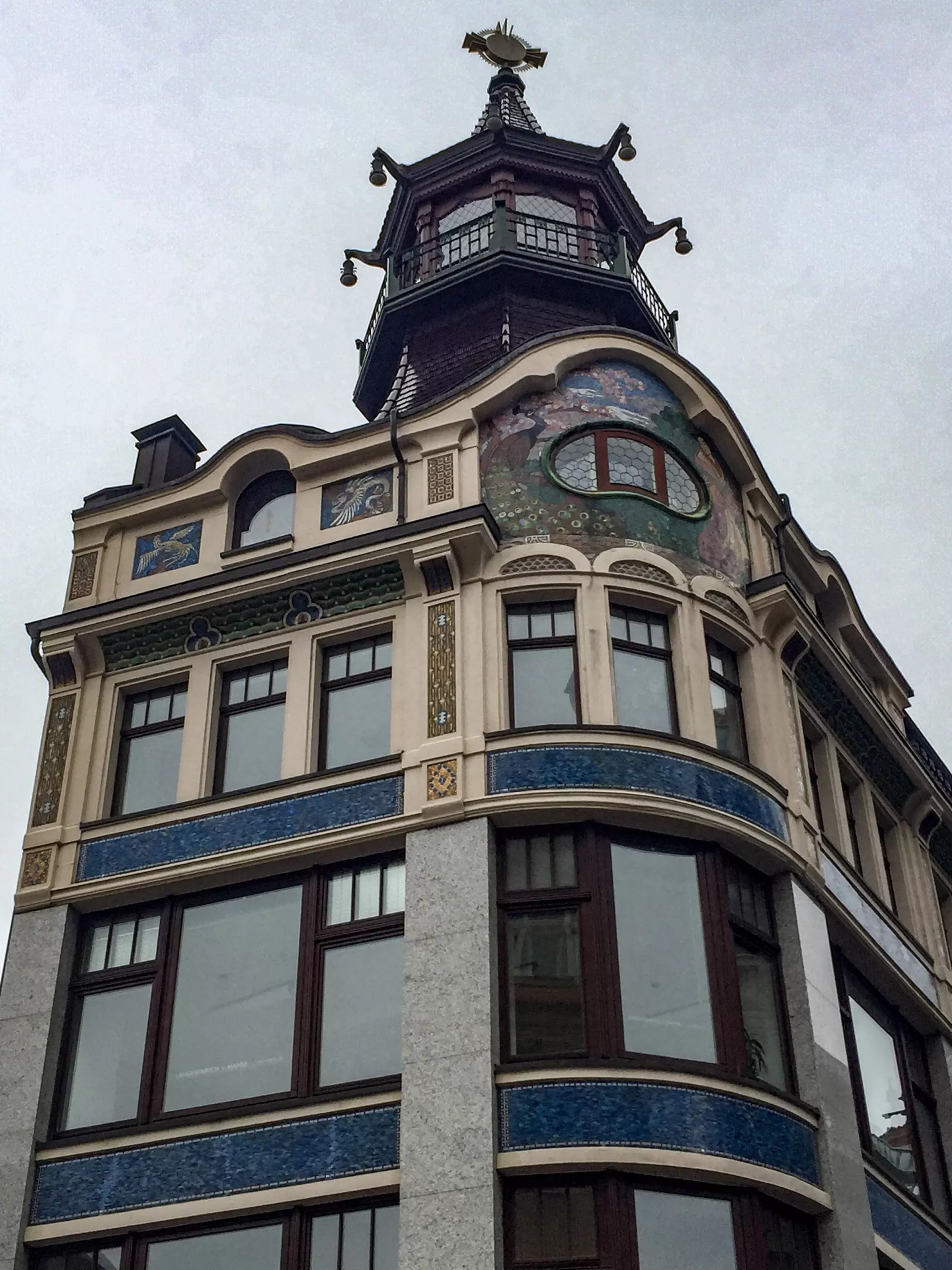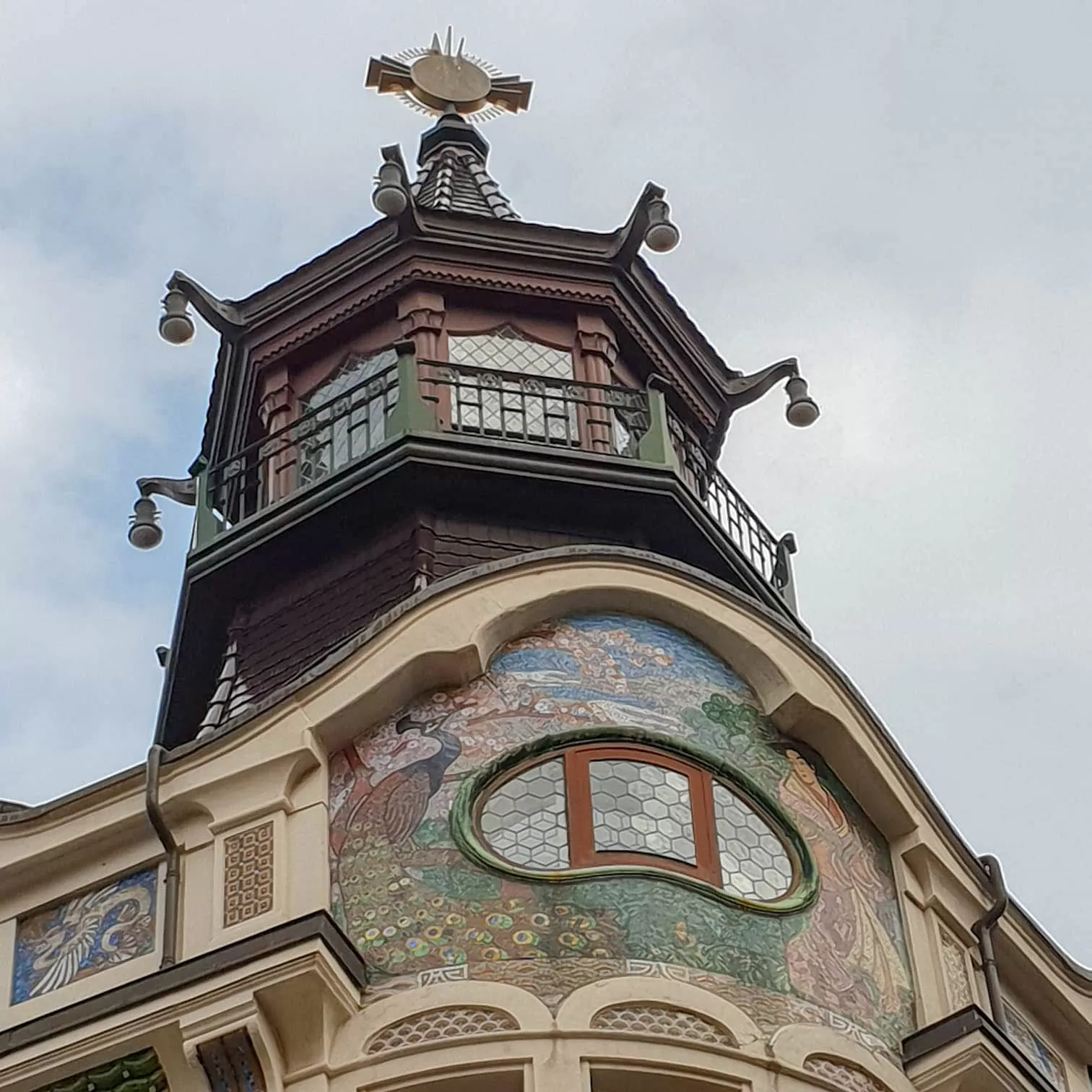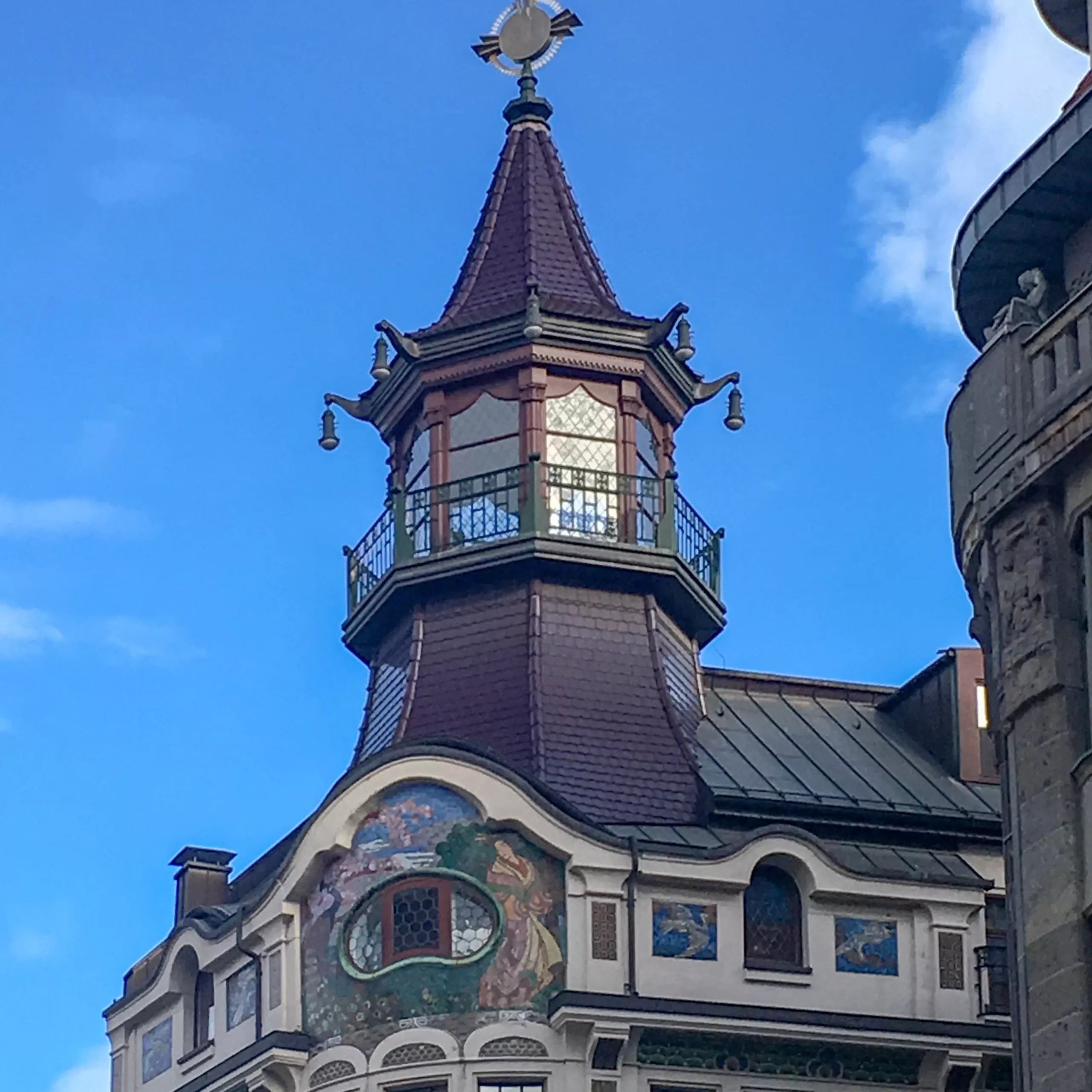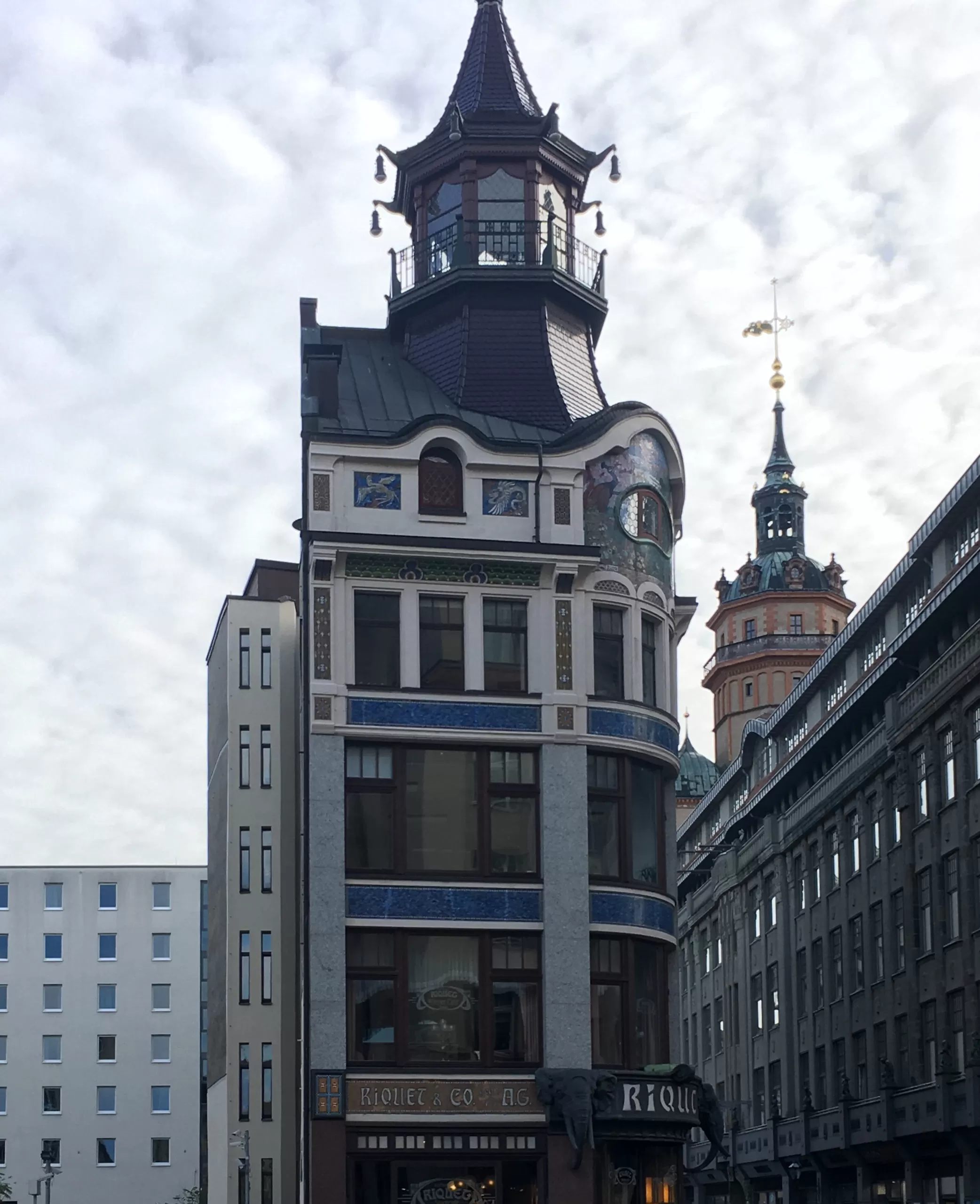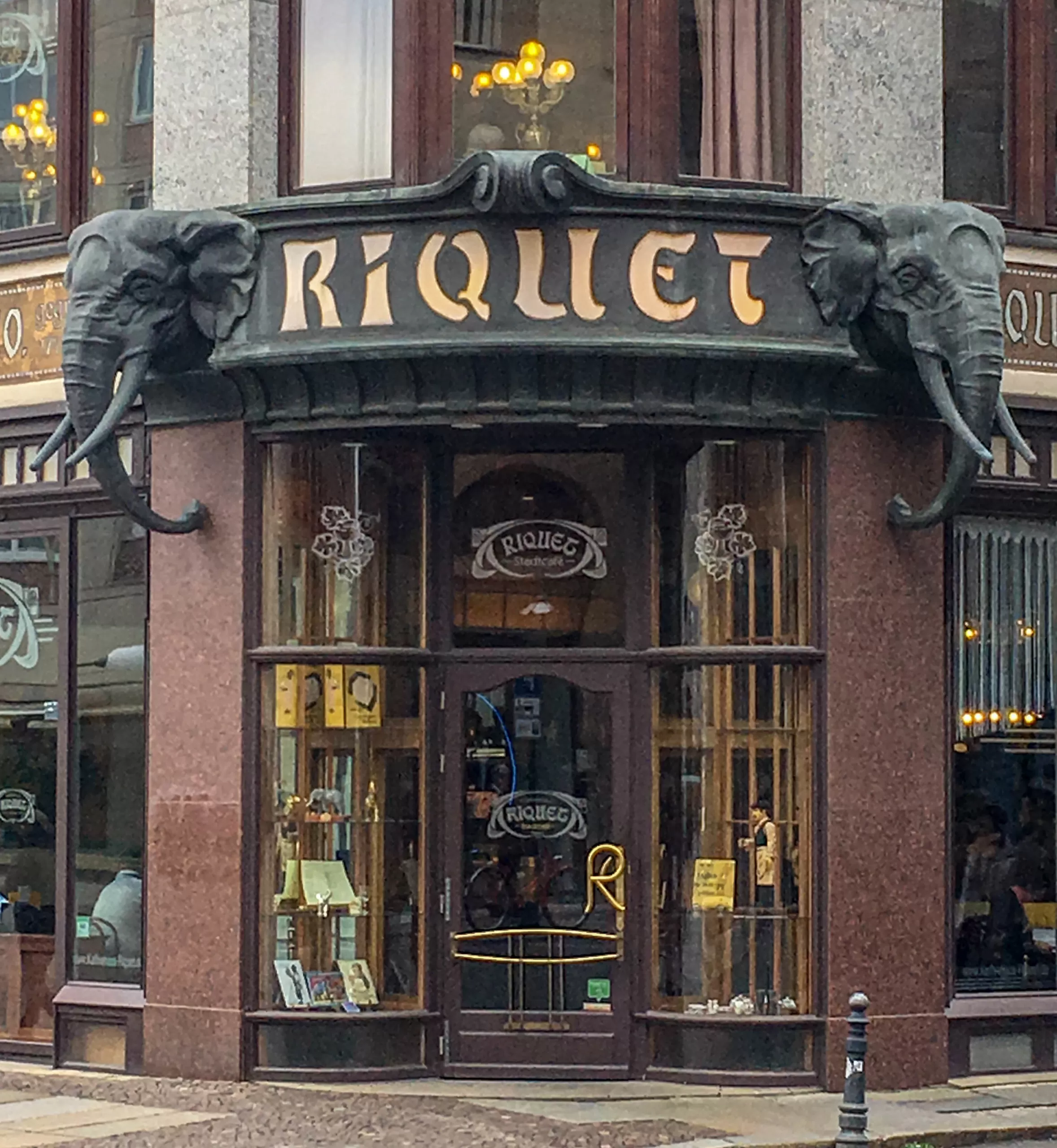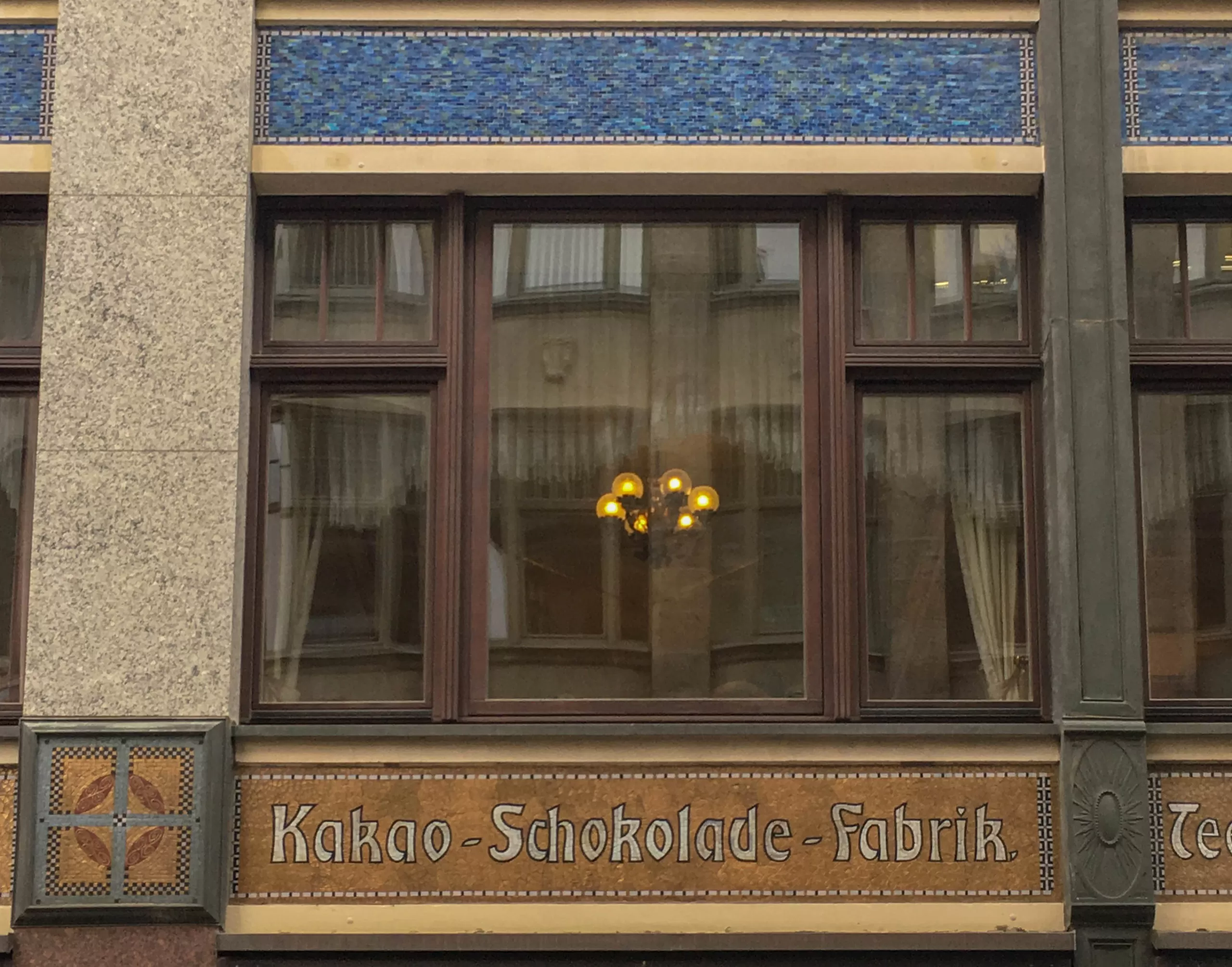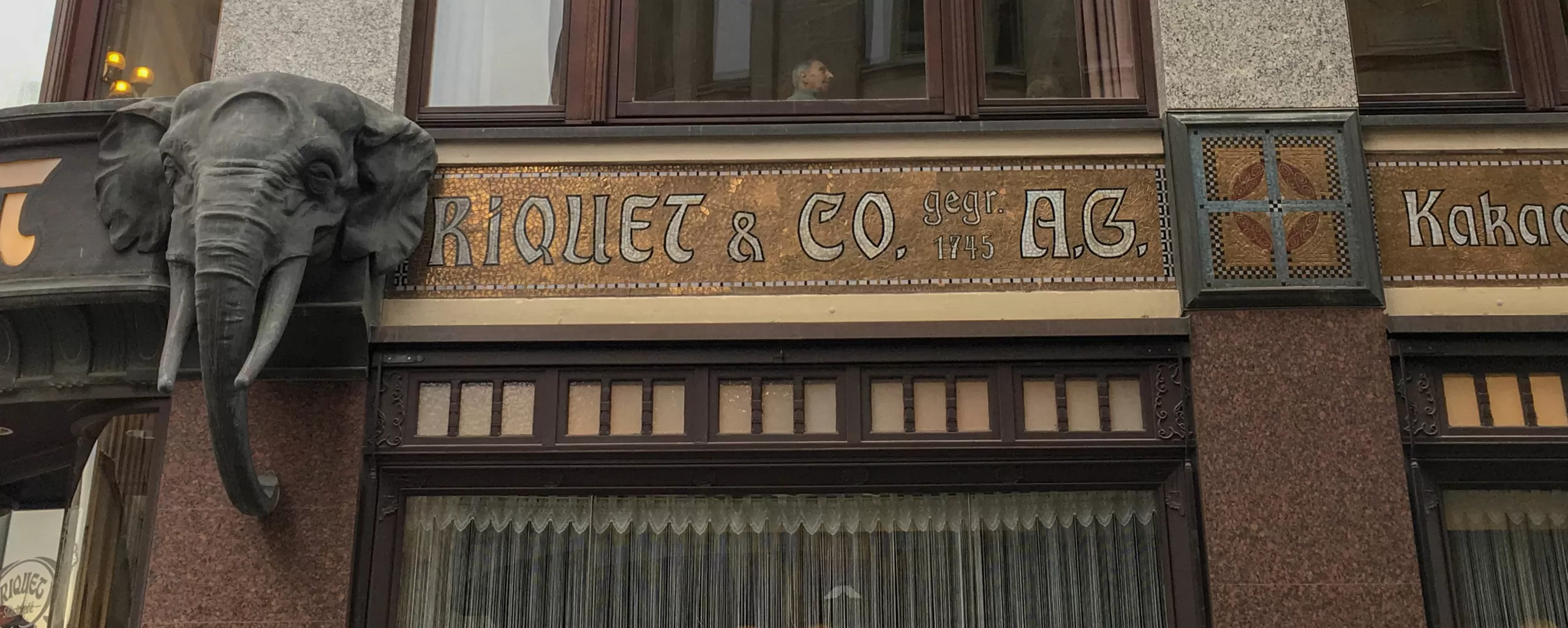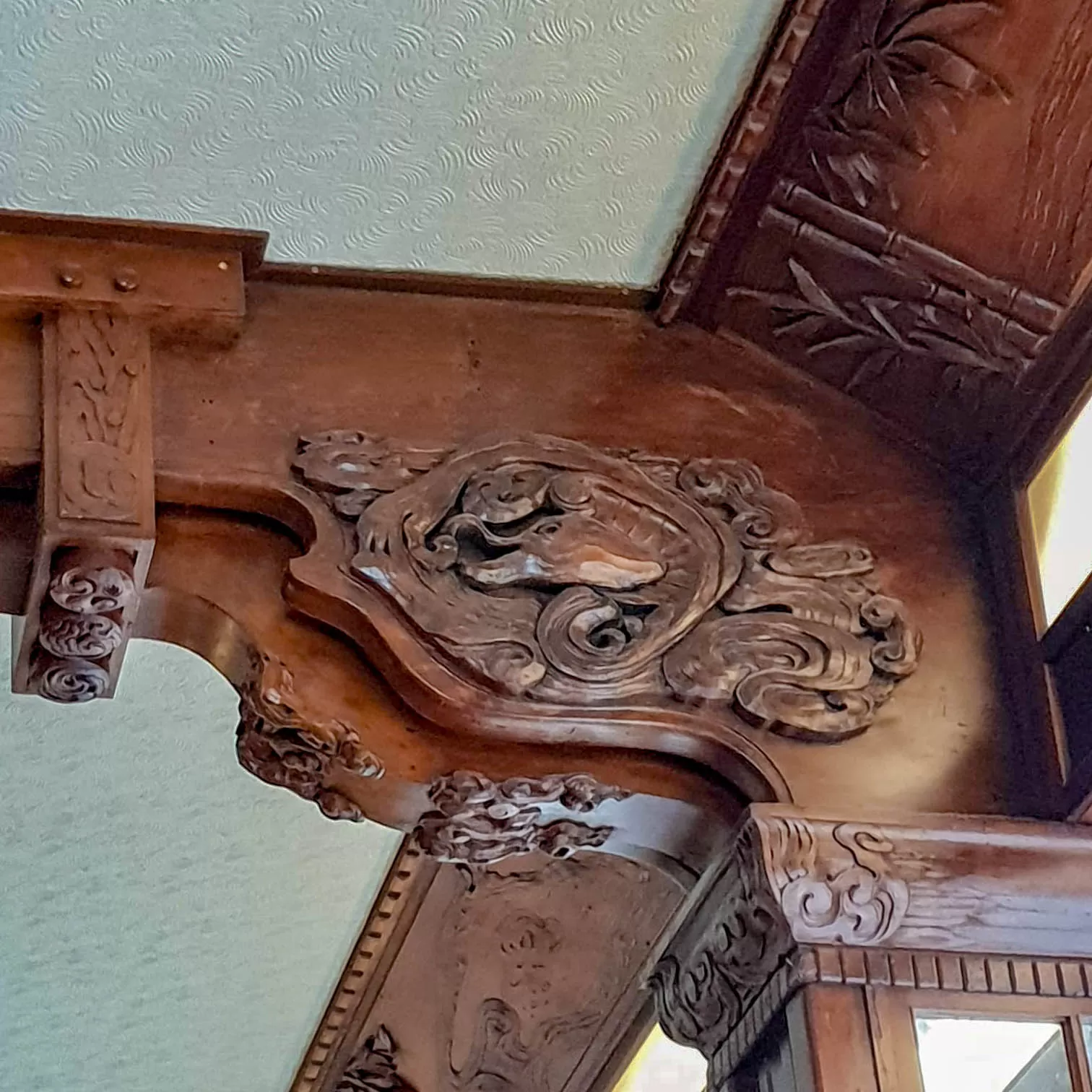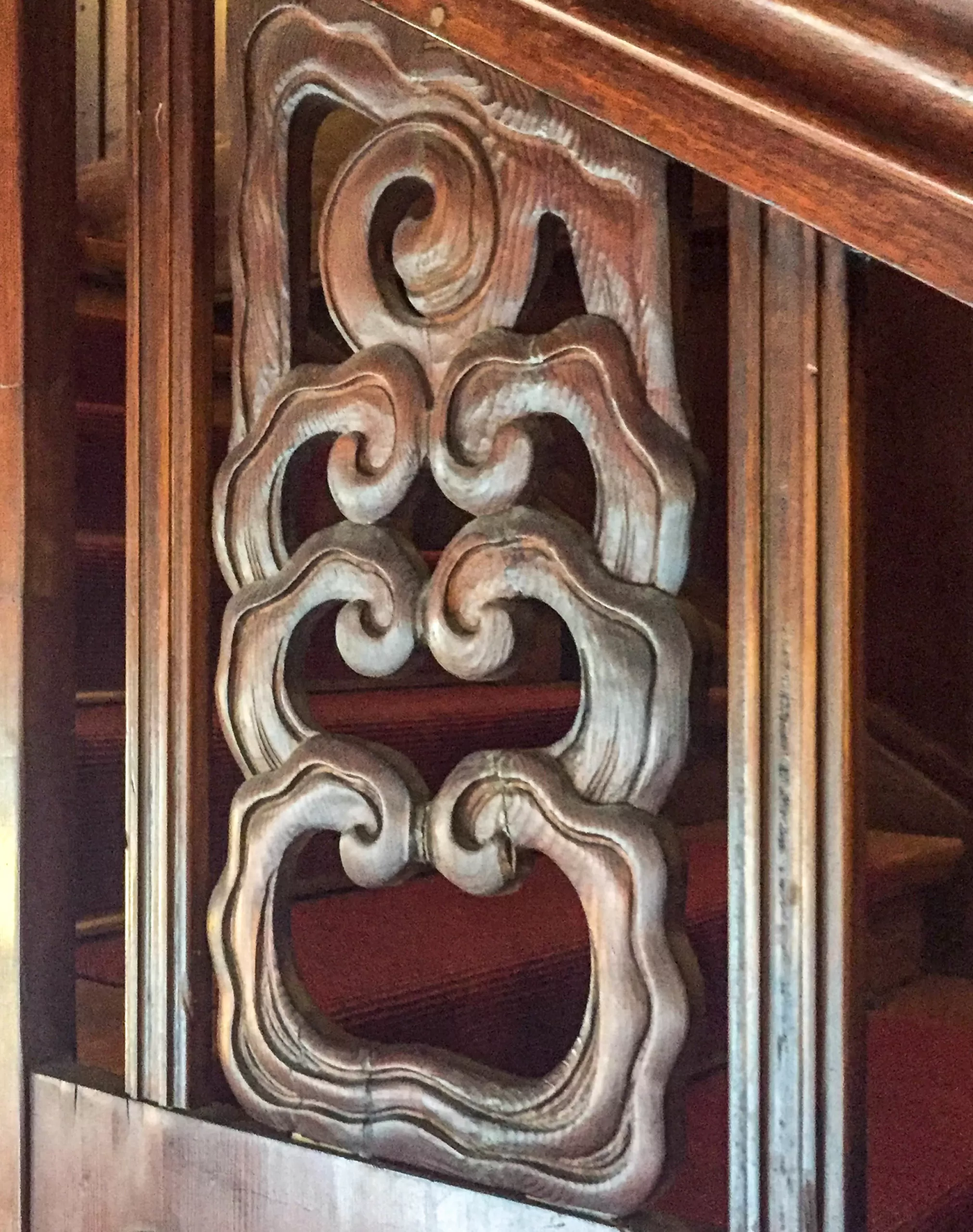1908-1909
Architect: Paul Lange
Schuhmachergässchen 1-3, Leipzig
The Riquet House in downtown Leipzig was built between 1908 and 1909 as a business and trade fair building for the Riquet Company according to plans by architect Paul Lange.
Building
Paul Lange was commissioned by Riquet & Co. AG to erect a trade fair building for tea on a narrow plot of land.
In order to obtain sufficiently large rooms, the building was erected in steel skeleton construction.
The external steel columns and the ceiling beams are clad with mirrors and wood decor in the commercial spaces on the first floor.
A pair of copper-driven elephant heads on the entrance door are the company’s trademark.
The architect found the model for the building’s double-story curved roof turret in Chinese and Japanese pagodas.
The pagoda’s roof crowning, visible from afar, refers to the countries of origin of the products sold in the exhibition house and at the same time shows the influence of Japonism on Art Nouveau architecture as well.
Parapets, pillars, main cornice and round gables are decorated with colorful mosaics in Art Nouveau forms.
Riquet & Co. AG
Besides cocoa, chocolate, chocolates and wafers from its own production, the company also traded in Japanese, Chinese and Oriental goods.
After the Edict of Fontainebleau in 1685 forbade the Huguenots to practice their religion freely, the Riquet family emigrated from France to Germany.
Jean George Riquet opened a “colonial wholesale business” in Leipzig on November 15, 1745.
Product Range
The company, which imported tea, coffee and spices, was initially located in Katharinenstraße, and from 1763 in Klostergasse 5.
Among Riquet’s customers was Johann Wolfgang von Goethe, who declared the brand his favorite chocolate and kept up a lively correspondence with Jean George Riquet.
After Riquet’s death, his nephew of the same name continued to run the business from 1791, handing it over to his partner Christian Friedrich Meyer in 1818, who expanded it into a “Thee-Specialgeschäft”.
Around 1850, Meyer established a department for retail trade in cocoa, English cookies, jams, coffee, alcoholic beverages, tobacco, Japanese and Chinese goods.
In 1890, the company began producing cocoa.
The number of employees increased steadily, and in 1921 there were about seven hundred employees working for Riquet.
Chocolate under the Riquet name has been produced by Waldbaur in Stuttgart since 1945.
Restoration and current use
After the referendum in Saxony in 1946 approved the dispossession of the large companies, Riquet & Co. AG was expropriated without compensation.
Although demolition was threatened in 1968, the teahouse was preserved. From 1994 to 1995, it was restored to its original condition by the Cologne architect Knut Bienhaus and the tower, which had been destroyed during the war, was returned.
Since 1996, the ground floor has been home to the Riquet coffee house.

